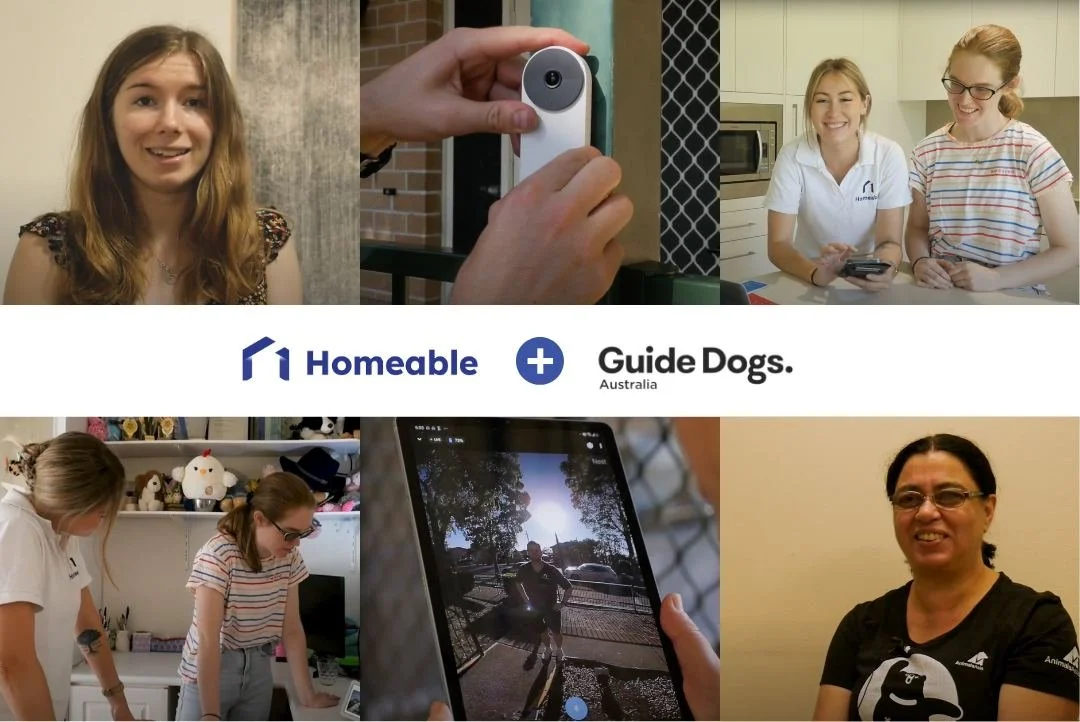Exploring the impact: Homeable's collaboration with Guide Dogs NSW/ACT
In collaboration with Guide Dogs NSW/ACT, Homeable embarked on an eight-week Pilot Program aimed at uncovering the potential of smart home technology for individuals who are blind or have low vision. This journey of exploration was designed to shed light on the transformative impact that tailored smart home solutions could have on the participants’ independence, safety, and overall quality of life.
What did we learn?
Let's delve into the key findings that emerged from the program:
1. Embracing Novelty with Caution
Participants exhibited an understandable hesitation to change. Many had already developed intricate routines rooted in their familiar surroundings. The introduction of new technology initially sparked feelings of reluctance. As one participant stated, "Pre-trial, I didn't quite understand how this smart tech would help me. I thought the impact would be minimal. Knowing more relatable and relevant use cases would have helped me realise how it could fit into my life."
This sentiment was echoed by others who initially had reservations and limited understanding of the transformative possibilities. It immediately became evident that a clear communication of the technology's benefits is essential to encourage willingness to adopt these innovative solutions.
2. A Fresh Lens on the Environment
Smart home technology, when customised to individual needs, opened up new ways of perceiving the world. This was a significant revelation.
For instance, by utilising a video doorbell, individuals can transform their ability to understand their environment. With features like facial recognition and audible identification alerts through a Google hub and phone, they can now identify who is at their front door without relying on traditional visual cues. This demonstrates how smart home technology effectively supports navigation for people with low vision or blindness.
Similarly, tailored smart home technology can completely change how an individual interacts with their TV. Integrating technologies like infrared receivers and voice-controlled hubs enables individuals to navigate their TVs using their voice, reducing reliance on vision. For example, voice-over functionality on devices like the Amazon Firestick empowers independent menu navigation and content selection. These solutions provide alternative means of TV interaction, liberating individuals from the need to stand directly in front of the screen as some participants were doing prior to the program. These personalised solutions showcased how these tools can help individuals 'see' their environment in unique ways, amplifying their autonomy.
3: Prioritising Security
Safety and security emerged as primary concerns among participants. Beyond mere independence, smart home solutions that heightened security garnered substantial interest. These technologies provided an added layer of confidence in their homes, redefining their sense of security and control.
Salma's experience perfectly exemplifies this finding. The addition of a doorbell not only provided her peace of mind when answering the door but also reassured her when she heard activity outside her house. Previously, Salma kept her gate locked at all times, limiting access to her front door and only unlocking it when anticipating someone's arrival.
Another aspect that emerged from the program was participants' concerns about safety when it came to electrical appliances. For instance, some participants sought smart plugs so they could ensure their appliances were turned off by using voice commands such as telling their Google hub to turn off the hair straightener.
4: The Power of Comprehensive Support
The impact of smart home technology was greatly enhanced when coupled with consistent education and support. Troubleshooting challenges, like Salma's doorbell issue, required in-person assistance to navigate complex device settings effectively. Similarly, through Homeable’s guidance on researching recipes on her Google Hub, Amy successfully prepared a meal independently and experienced the joy of newfound confidence and convenience.
True transformation goes beyond technology alone. Without adequate support and education, the potential benefits of smart home technology may remain untapped or underutilised.
This partnership has not only underlined the immense potential of smart home technology for the blind and low-vision community, but has also spotlighted the significance of continuous support and education. Our commitment to delivering accessible and impactful solutions is further reinforced by these insights. If you’re interested in discovering how smart home technology may benefit you, book in a free consultation with Homeable.
A collage of the three pilot participants, Sophie. Salma and Amy. A banner with the Homeable and Guide Dogs Australia logos sits horizontally in the middle.


